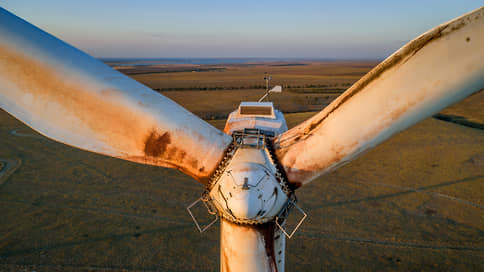Climate goals will be selected for investments
[ad_1]

Achieving carbon neutrality by 2050 requires a multiple increase in investment in the world and is therefore unlikely to be feasible, the Russian Energy Agency (REA) of the Ministry of Energy believes. In the context of limited funds in developing countries, the REA considers the scenario of rational technological choice, which involves achieving less ambitious climate goals with less investment, to be a balancing option. The choice of this option by the Ministry of Energy analysts as a priority allows us to judge the possible future of Russian energy policy in the coming years.
The Russian Energy Agency (unites specialized centers of scientific and technical information) Ministry of Energy on Tuesday presented “World Energy Scenarios until 2050” (.pdf). The findings outlined in this study will most likely be taken into account by the ministry when updating the Energy Strategy of the Russian Federation. Analysts are considering three possible scenarios for the energy transition: “Everything as usual” (BKV, an analogue of “business as usual” used in international reports), “Rational technological choice” (RTV, a reform scenario) and “Net zero” (CN, achieving carbon neutrality). 2050).
It is noted that the VKV scenario is virtually inapplicable today—due to climate risks, it will not be possible to stop the energy transition even in the most unfavorable years for energy market conditions. The “ideal” CN scenario also looks less and less feasible. The investments it requires can only be provided by a limited number of countries—for the majority, investments in the required volumes may cost the failure to achieve other important socio-economic objectives (including in health care and education).
So, REA analysts see the “middle” scenario—RTV—as a risk-balancing option. It is expected that its implementation will cost 1.5 times less than the CN, while climate goals, albeit less ambitious, will be achieved.
Emissions are reduced by 34% by 2050 (compared to 2022 levels) – which should be enough to stabilize the rise in average global temperatures at 2°C (the upper limit of the range assumed by the Paris Agreement). The RTV option takes into account, among other things, an increase in the share of renewable energy sources in global energy consumption to 31% and a reduction in the share of fossil hydrocarbon fuels to 56%.
Let us note that in fact, the choice of the “middle” scenario, which seems optimal to the REA, allows us not to catch up with developed countries: that is, not to set as goals a serious increase in investment in the energy transition. The choice of this option by developing countries importing Russian oil and gas may mean relatively stable demand for them for the Russian Federation. At the same time, for these states themselves, the attractiveness of purchasing from a shrinking energy market can seriously delay the achievement of climate goals.
However, even in such a scenario, the estimates of an increase in Russian gas exports given in the review are hardly realistic.
In the context of the almost complete loss of the European market, problems with payments and shipments, an almost twofold increase in exports (to 313.9 million tons of oil equivalent by 2050) looks like a serious exaggeration. In particular, this circumstance allows us to perceive the study not as an objective forecast, but as an argument for the authorities to make decisions about a special Russian version of the energy transition in the medium and long term.
[ad_2]
Source link






